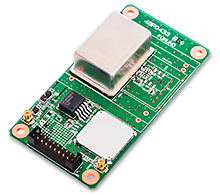Articles for ITS market ETC Version 2.0 is coming soon. A new service was announced at the Tokyo Motor Show and the possibility that is could be used as a device for older drivers.
The 44th Tokyo Motor Show (October 30th to November 8th 2015) reached 812 thousand visitors in total and ended with a big success. I thoroughly covered the “Smart Mobility City” at the 2nd floor of West Exhibition Hall. The booths there were mainly about the next generation car such as a driverless car or a fuel-cell car etc, but I paid particular attention to the ETC2.0.
What is ETC (Electronic Toll Collection System) ?
ETC is the Charge Adjustment System so that fare is adjusted electronically (by credit card) and by the wireless communication between ETC and tollgate when the vehicle passes the tollgate. If there is no problem with the wireless communications, the gate opens automatically and the cars pass without requiring them to stop.
What is ETC2.0 ?
ETC2.0 is the second generation ETC, (Electronic Toll Collecting System). The differences between the first generation and the second generation are that ETC can measure the position as it has GPS function and furthermore, it is fully equipped with many kinds of support systems like Congestion Avoiding System, Safe Driving Support System and Disaster Information System. These support systems have been called “ITS spot” in Japan. ETC2.0 is the fusion of ETC and ITS spot.
My experience before the introduction of “ITS spot”
I would like to introduce my experience of “ITS spot” in order to talk about ETC2.0.
I joined the “ITS spot information session” which was held by Ministry of Land, Infrastructure and Transport for the press in the second half of 2010 and 2011, twice in total. Also I joined the tour and inspected the Traffic Management Department of Metropolitan Expressway Company Limited and then I watched every kind of service on the monitor while riding a bus and running metropolitan expressway. I was introduced to specific examples like a simulation of the reminder of traffic accident at the black spot on metropolitan expressway.
When I joined the tour, the Japanese government said they had started building ITS spot from autumn in 2009 and would complete building 1600 ITS spot at all areas in Japan till March in 2011. However, when I asked a person of Ministry of Land, Infrastructure and Transport in this Tokyo Motor Show, he answered it had not increased more than 1600 spots in expressway.
I also realized that the selling point of ITS spot was that VICS(Vehicle Information and Communication System) could be used across the prefectures. In fact, I viewed that ITS spot drew the optimum route on the monitor based on the analysis of VICS and the latest information from each road transportation company. Furthermore, a person of Ministry of Land, Infrastructure and Transport said they had a plan to increase the functions of ITS spot, for example, wifi would be available in the rest area or the electronic payment would be available in the drive through etc.
Japan has been leading the ITS field for a long time with the achievements of the public infrastructure for ETC and VICS etc, and as the normal evolution, people had a big expectations for ITS spot.
However, the world’s trend definitely was not a tailwind for ITS spot, because Smartphone and Cloud became popular very quickly. Detailed traffic information and navigation have been provided at a very low price or free by the application in smartphones and it involved to the sales of in-vehicle navigation units directly. The trend had changed. Previously, it had been a performance improvement and high price, but especially around the young people, the demand of lower price navigation products increased and also many people started using smartphones on a cradle instead of in-vehicle navigation unit. Automotive equipment manufacturers embedded the ITS spot into their high value and high price navigation units, that is why the smartphone had a very big impact.
Also regarding one of the selling point of ITS spot, the electronic payment, NFC (Near Field Communication) cards which use a short wave 13.56MHz spread very quickly. It is very possible that drivers use NFC cards without getting off the car when they receive a product in the drive through service. Based on these points, it was necessary to verify a future direction of electronic payment by ITS spot.
This time, in the brochures of Ministry of Land, Infrastructure and Transport which were distributed in Tokyo Motor Show, there were several new additional expansions in matters of driving support service.
For example,- The introduction of measures that in case a car gets off from the expressway a while, keep the toll as same as not getting off the expressway (The introduction starts from 2016)
- Some expressways will be covered as discount expressways for large and frequent customers.
- The trial of fleet management service for trucks (The trial started from autumn in 2015)
The possibility of the device for older drivers
By the way, I always think ETC2.0 should be very useful for older drivers. The other day, I pointed it out in the live TV show.
On the day before of closing 44th Tokyo Motor Show, from 8:15am to 9:28am on November 7th (Sat). I was on one NHK’s TV program for 45 minutes, and I discussed with other speakers about the topic “How to reduce the traffic accident of older people”.
A 73-years-old man with dementia went out of car control, killed 2 people and injured 4 others. It happened in Miyazaki on October 28th . In recent years, The traffic accidents of older people like driving on the wrong side of the road, hit-and-run etc have been increasing. In the TV program, based on these kinds of cases, I discussed about “How to reduce the traffic accidents of older people” with the guest entertainers and doctors who are studying dementia in the atmosphere of “chat session”.
In this discussion, I mentioned that Utilization of ETC2.0 for the reverse run prevention was being studied”. ETC2.0 currently in the case that the automatic toll collection system emits 5.8GHz frequency signal as per 4 meters width and in case of data transmission in old ITS spot service area, it also emits 5.8GHz frequency signal as per 20 meters width. Based on a person related laboratory of Ministry of Land, Infrastructure and Transport with whom I had an opinion exchange, it is possible to inform reverse run to driver as well as other general driver by emitting different width of 5.8GHz frequency signal when the reverse run happens. However, it cannot remove the possibility that reverse run’s signal interferes other general driver, that is why it needs studying more.
As my opinion, the Japanese government should provide ETC2.0 to over 65 years old drivers by free. I think they should inject tax money into this kind of matter which is directly linked to safety rather than each kind of subsidies that do not have any effectiveness.
Besides, the transmitters supported ETC2.0 are established at 1500 national route spot at all area in Japan and Japanese government is collecting the probe data on condition of anonymity. I think they should discuss the matter what they grasp abnormal driving in advance by opening the anonymity tracking data of over 65 year old drivers with their agreement.
ETC2.0 is the very important equipment which improves whole country’s traffic environment including older drivers.
Writer introduction

Mr. Kenji Momota Automotive journalist
His major is the world automotive industry and he is also familiar with the energy industry, IT and the aging society problem as the related fields. He acts around the world based in Japan and USA and writes for the general magazines, the technology journals and the automotive related media etc.
He is also commentator of motor race and world's motor show on TV program based on his career of the driver of Indy Racing League and NASCAR. In recent years, he has been covering about a paradigm shift from developed countries to developing countries, the motorized vehicle like EV and the telematics.
FURUNO ITS Journal
Click here for the latest articles after 2022 (in Japanese)2022
- The "realistic" self-driving roadmap shown by the Japanese government and a hands-on report on the latest Subaru EyeSight X
- Will FCVs (Fuel Cell Vehicles) Become Popular? ~New Movement in Toyota and Honda~
- The 'Complete' online sales of new cars start in Japan. Will this new way of buying cars take root?
- Many Firsts! On-Site Report from Tokyo Auto Salon 2022 - The author, who knows what goes on behind the scenes, looks back on 40 years of history. -
2021
- "Moving toward zero traffic fatalities for four-wheeled and two-wheeled vehicles globally in 2050" ~Experience on Honda's latest safety technologies~
- Tsuneishi Shipbuilding's building and DX, an exclusive visit to the main factory
- Japan's Smart City: New Moves toward Practical Use
- When will self-driving buses (service cars) be put to "full-scale" practical use?
- Utilization vehicle data during disasters
- Toyota-led Connected Technology to Transform Commercial Vehicle Business -From light trucks to large trucks and buses-
- Toyota enters the connected car "Personalization" business
- Japanese automakers' carbon-neutral strategies swept up in ESG investment
- Drive experience of the latest autonomous vehicle models and advanced driving support systems
- Will carbon neutrality accelerate the trend to strengthen LCA (Life Cycle Assessment)?
- Semiconductor shortage exposes realities of the automotive industry
- Online Autonomous Driving Contest Enhancing development of Human Resources
2020
- What happens to CASE when gas cars are banned in Japan?
- When will Flying Cars be launched?
- Expectation vs. reality:Autonomous Driving in Japan
- V2X, Becoming increasingly important in autonomous driving
- Technology of Subaru “EyeSight X”
- Lifestyle-oriented French cars gain popularity in Japan
- Human-oriented smart cities are wanted
- MaaS and CASE, how would automotive industry change after COVID-19?
- The beginning of virtualization era, triggered by COVID-19
- Trend of EV shift and consumer demands
- TOYOTA Press conference about ADAS - Releasing algorithm for "sudden acceleration suppression during attempted sudden acceleration" free of charge -
- The Japanese automotive industry in 2020 - 3 turning points -
- "Using a smartphone while driving" and "Level 3 automated driving"
2019
- Motor show business model is at a turning point - Tokyo Motor Show Report -
- Commercialization and monetization of MaaS - ITS World Congress Singapore Report -
- Android Automotive pays attention to V2X - Report from the Frankfurt Motor Show 2019 in Germany -
- Automobile Distribution Revolution and DCM (Data Communication Module)
- Connected business potential and newly proposed "eMaaS" by Honda
- 5G services for practical use are multiplying
- Connectivity technologies attracting attention due to frequent traffic accidents
- Shanghai Motor Show report -SUV, EV, Automated car & 5G-
- Drone Business roadmap and updates to Michibiki (Quasi-Zenith Satellite System)
- MaaS (Mobility as a Service) "town development." Full-scale promotion for a national project
- CES organizer states "Data Period in 2020s." Transformation of the Automotive Industry in CES, US "-CES2019 Report-"
- "Return to Origin" directed towards the age of change, automatic operation and connectivity
2018
- New proposal for Private Car Automated Driving Level and other Hot 5G Technology Topics
- Standardized EV charging infrastructure concerns in Europe, US, Japan and China - Kobe EVS 31 field report -
- Touring a pure car carrier and a test drive of the latest hybrid car
- Planning stage products are exhibited at the newly established visualized mobility service "TOYOTA MOBILITY SHOWROOM".
- Potential “Community Car-share” program promoted by local residents
- CES Asia Report 2108
- Companies attempt new Vehicle-to-Infrastructure communications, including traffic volume measurements and vehicle positioning. -ITS Asia Pacific Forum in Fukuoka-
- Geneva show in Switzerland. Flying cars and MaaS (Mobility as a Service) were hot topics.
- EV (Electric Vehicle) proposals by country
- MaaS competition through service mobilization, M & A and technical field collaboration is accelerating. - The CES 2018 Report -
2017
- Big data’s initiative and fight for the automotive industry. Cooperation among companies becomes increasingly important.
- Connected car and road-to-vehicle communication automatic operation
- ETC (Electronic Toll Collection) and ETC2.0. Current situation and projected future
- Rapid development of sharing economy
- Germany is first to recognize level 3 automated driving
- ITS EU 2017 Field Reports -Automatic Operation and the eCall-
- From Infotainment to ITS, the competitive area is spreading in the car big data industry.
- GTC (GPU Technology Conference) Report and the de facto standardization of AI (artificial intelligence)
- Renesas' new challenge! "e-AI Solution" and "Renesas Autonomy"
- The Automobile industry is shifting from a manufacturing industry to a service industry.
- The movement toward accident countermeasures for aging drivers in Japan
- Fusion of ride sharing and fully automated driving is advancing in the USA.
2016
- Overview of the Quasi-Zenith Satellite System (QZSS) and advancements toward full-scale practical use including the Tokyo Olympic Games - G-space EXPO 2016 report-
- Japan’s automated driving project "SIP-adus" will be a large demonstration experiment.
- The International Home Care & Rehabilitation Exhibition. There were many car manufactures with exhibits booths at this show.
- Japanese car manufacturers starting to concentrate on strengthening the ADAS system
- A new movement of legislation for autonomous cars
- Cyber Security and “AGL”, the new OS for automotive are hot topics in the connected car industry
- “High precision 3D map” the key future of autonomous car and pedestrian dead reckoning
- Chinese “BAT” is accelerating their business in the EV (Electric Vehicle) market
- Tesla's original connection to Taiwan and the new transportation system technologies.
- "The main topic" of the Geneva Motor Show was how to strengthen "pedestrian protection"
- The probe data business is getting more competitive
- Reporting directly from the 2016 CES show "Data services will soon become the main revenue source of automotive industry"
2015
- Do the automated driving systems need the GNSS (Global Navigation Satellite System) ?
- ETC Version 2.0 is coming soon. A new service was announced at the Tokyo Motor Show and the possibility that is could be used as a device for older drivers.
- "Connected Horizon" and "eHorizon". Germany's leading parts supplier accelerates strengthening of "Big Data" for business


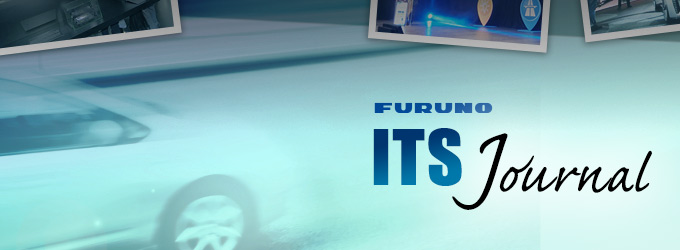
 A long line of the people who were waiting for the opening of Tokyo Motor Show on weekday morning, around 10am.
A long line of the people who were waiting for the opening of Tokyo Motor Show on weekday morning, around 10am. In-vehicle unit with embedded ETC2.0
In-vehicle unit with embedded ETC2.0 General visitors were very interested in ETC2.0.
General visitors were very interested in ETC2.0.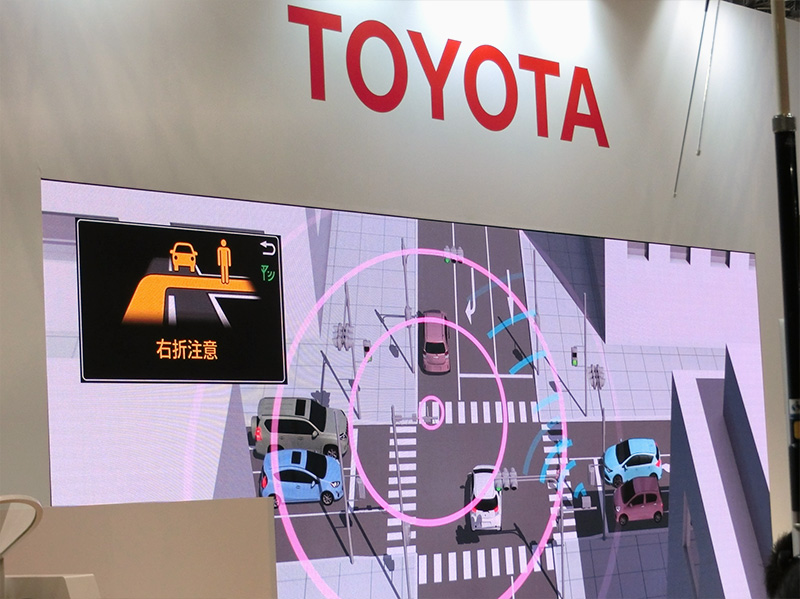 ITS connect announced by TOYOTA
ITS connect announced by TOYOTA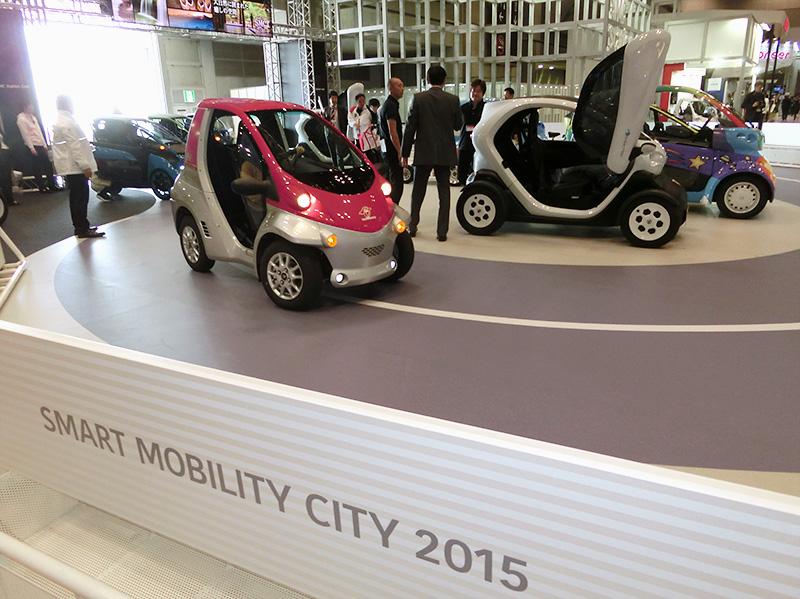 “Smart Mobility City” at the 2nd floor of West Exhibition Hall. As last time, this time also was carried out the demonstration drive of ULV (Ultra Lightweight Vehicle).
“Smart Mobility City” at the 2nd floor of West Exhibition Hall. As last time, this time also was carried out the demonstration drive of ULV (Ultra Lightweight Vehicle).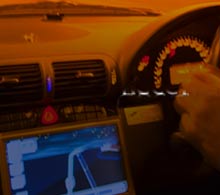 GPS/GNSS Receiver&Chips and Modules (positioning and timing)
GPS/GNSS Receiver&Chips and Modules (positioning and timing)